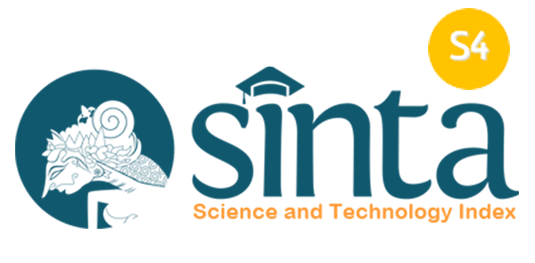Analysis of Black Rice Assimilation Rate due to Application of Arbuscular Mycorrhiza and Rice Straw in Rainfed Rice Fields
DOI:
https://doi.org/10.25181/jplantasimbiosa.v6i2.3800Abstract
Black rice cultivated on land with low water content can adapt and grow well by utilizing rainfed land. Arbuscular Mycorrhizal Fungi (AMF) application increase water and nutrient absorption. Soil moisture plays role in the development of AMF. Attempt to maintain soil moisture can be balanced by applying rice straw to the land. This research aimed to examine the role of mycorrhiza and rice straw and their interactions independently in increasing the rate of assimilation and relative growth of black rice in rainfed rice fields. The experiment was conducted in Tebas District, Sambas Regency from July to December. This research method used a split-plot design with randomized block design consisted of main plot and subplot. The main plot was AMF treatment (without AMF and AMF administration), and the subplots were rice straw dosage (ton/ha) (0, 5, 10, 15). The experiment was repeated 3 times, 8 treatments and 16 observed plant samples and continued with Honestly Significant Difference (HSD) test with 5% level. Variables of this observation are leaf area, total dry weight, and net assimilation rate. The result showed that the interaction of AMF and rice straw treatment influenced leaf area, total dry weight and net assimilation rate. Keywords: Black Rice, Mycorrhizal, Rice StrawDownloads
References
Astiko, W., Wangiyana, W., dan Susilowati, L.E. 2019. Indigenous Mycorrhizal Seed-coating Inoculation on Plant Growth and Yield, and NP-uptake and Availability on Maize-sorghum Cropping Sequence in Lombok’s Drylands. Jurnal Tropika Agri Sains. 42(3):1131-1146.
Badan Pusat Statistik. 2020. Luas Panen dan Produksi Beras 2019. Jakarta.
Badan Pusat Statistik Kalimantan Barat. 2021. Provinsi Kalimantan Barat Dalam Angka. BPS Provinsi Kalimantan Barat. Pontianak.
Baka, Y. N., dan Tematan, Y. B. 2020. Pengaruh Pemberian Mulsa Jerami Padi dan Pupuk Kandang Ayam terhadap Produksi Bawang Merah (Allium cepa L.). Jurnal Biologi dan Pendidikan Biologi. 1(2):1-12.
Basri, A. H. H. 2018. Kajian peranan mikoriza dalam bidang pertanian. Jurnal Agrica Ekstensia. 12(2):74-78.
Dwinda, R., Harsono, P., dan Apriyanto, E. 2018. Respon pertumbuhan dan hasil tiga varietas Sorgum terhadap pemberian pupuk kandang dan mikoriza. Jurnal Penelitian Pengelolaan Sumber Daya Alam dan Lingkungan. 1(7):51-58.
Rochman , F. ., Priyadi, P., Budiarti, L., & Sutrisno, H. (2023). Respon Pertumbuhan dan Hasil Tanaman Jagung Pulut Ungu (Zea mays L. var ceratina) Varietas Jantan F1 Akibat Kombinasi Populasi Tanaman dan Dosis Pupuk Organik. J-Plantasimbiosa, 5(1), 42-54. https://doi.org/10.25181/jplantasimbiosa.v5i1.2989
Faizal, M. 2017. Identifikasi Karakter Morfologi Fase Generatif Padi Beras Hitam Senakin dan Beliah di Tanah Sawah. Skripsi Fakultas Pertanian Universitas Tanjungpura. Pontianak.
Faizal, R., Soedradjad, R., dan Soeparjono, S. 2017. Karakter fisiologis dan produksi padi ratun yang di aplikasi Synechococcus sp. dan pupuk organik. Jurnal Ilmu-Ilmu Pertanian. 15(2):162-180.
Gardner, F.P., R.B. Pearce dan R.L. Mitchell. 1991. Fisiologi Tanaman Budidaya. Universitas Indonesia-Press. Jakarta. 428 hal.
Jaenudin, A., E. Tadjudin., M. Parsetyo dan Maryuliyanna. 2020. Produktivitas Padi pada Musim Penghujan dan Musim Kemarau di Wilayah Desa Cirebon Girang (Rice Productivity in The Rainy and Dry Seasons in The Cirebon Village Area). Jurnal Agroswagati. 8(1):1-5.
Leskona, D., Riza, L. dan Mukarlina. 2013. Pertumbuhan jagung (Zea mays L). Dengan pemberian Glomus aggregatum dan biofertilizer pada tanah bekas penambangan emas. Jurnal Protobiont. 2(3):176-180.
Kilpelainen, J, Aphalo, P. J., Lehto, T. 2020. Temperature Affected The Formation of Arbuscular Mycorrhizas and Ectomycorrhizas in Populus angustifolia Seedlings More Than A Mild Drought. Soil Biology and Biochemistry. 146:1-12.
Maisura, M., Chozin, M. A., Lubis, I., Junaedi, A., dan Ehara, H. 2015. Laju Asimilasi Bersih Dan Laju Tumbuh Relatif Varietas Padi Toleran Kekeringan Pada Sistem Sawah. Jurnal Agrium. 12(1):10-15.
Marliah, A., Nurhayati dan D. Suliwati. 2011. Pengaruh Pemberian Pupuk Organik dan Jenis Mulsa Organik terhadap Pertumbuhan dan Hasil Kedelai (Glycine max). Jurnal Floratek. (6):192-201.
Sofyadi, E., Lestariningsih, S. N. W., dan Gustyanto, E. 2021. Pengaruh Pemangkasan Terhadap Pertumbuhan dan Hasil Mentimun Jepang (Cucumis sativus L.). Jurnal Agroscience. 11(1):14-28.
Wahyuningratri, A., A. Nurul, dan H. Suwasono. 2017. Pengaruh Konsentrasi dan Frekuensi Pemberian Pupuk Hayati terhadap Pertumbuhan dan Hasil Cabai (Capsicum annum L.). Jurnal Produksi Tanam. 5 (1): 84-91.
Wangiyana, W., Aryana, I. G. P. M., Gunartha, I. G. E., dan Dulur, N. W. D. 2018. Pengaruh Inokulasi Mikoriza terhadap Komponen Hasil Padi Sistem Pengairan Aerobik yang Ditumpangsarikan dengan Kacang Hijau. Jurnal Agritech, 38(3):289-294
Downloads
Published
How to Cite
Issue
Section
License
Copyright (c) 2025 J-Plantasimbiosa

This work is licensed under a Creative Commons Attribution-ShareAlike 4.0 International License.







